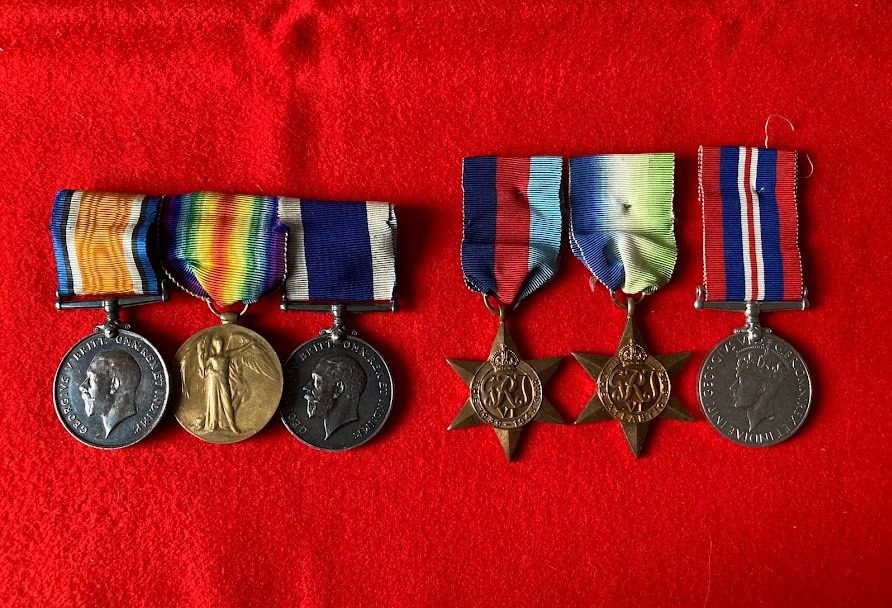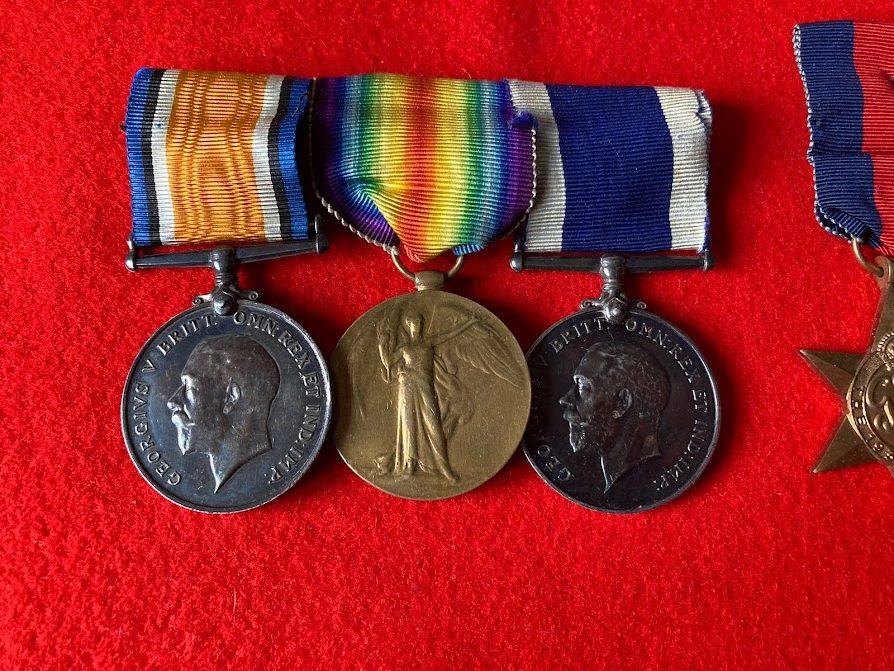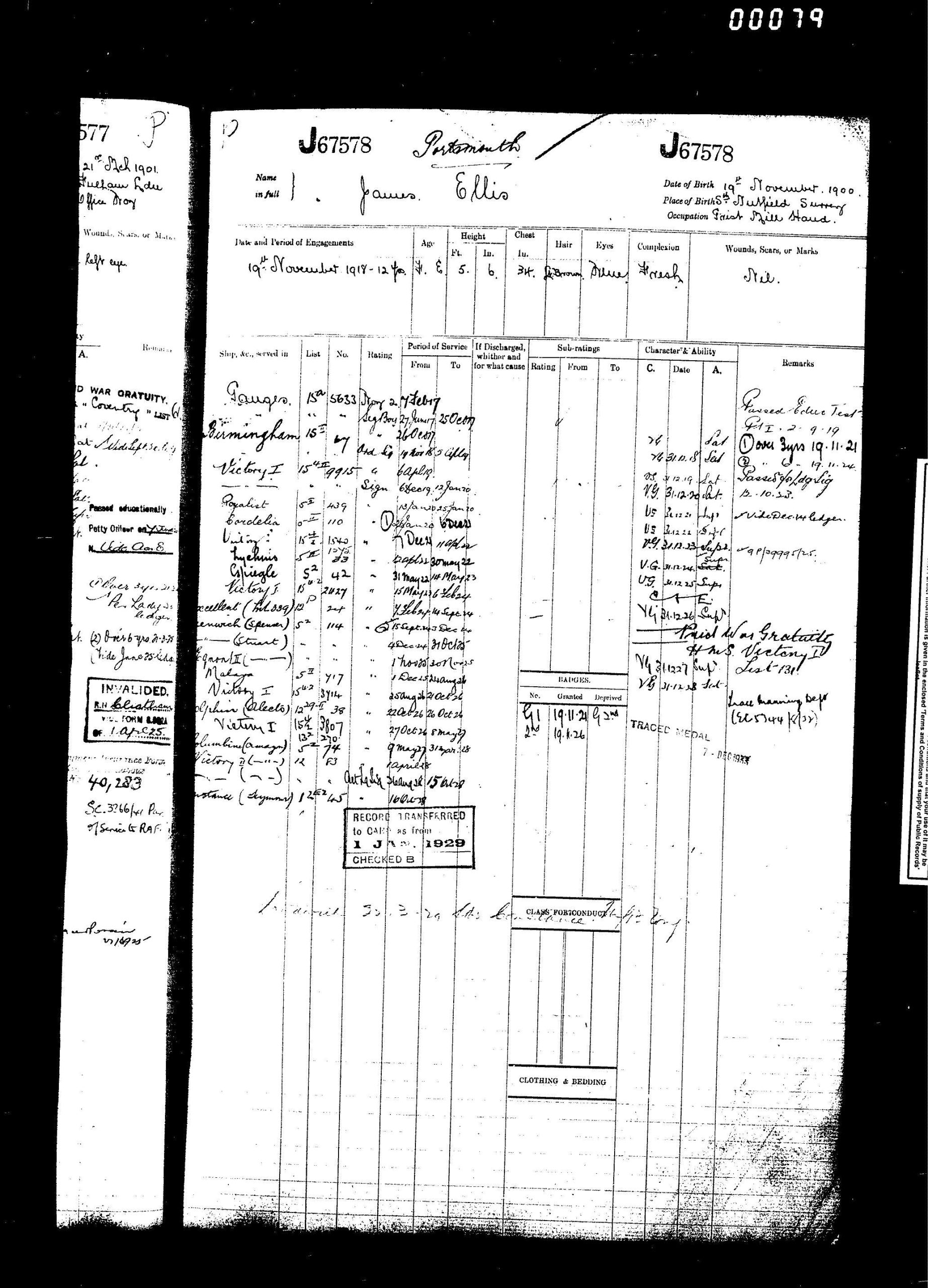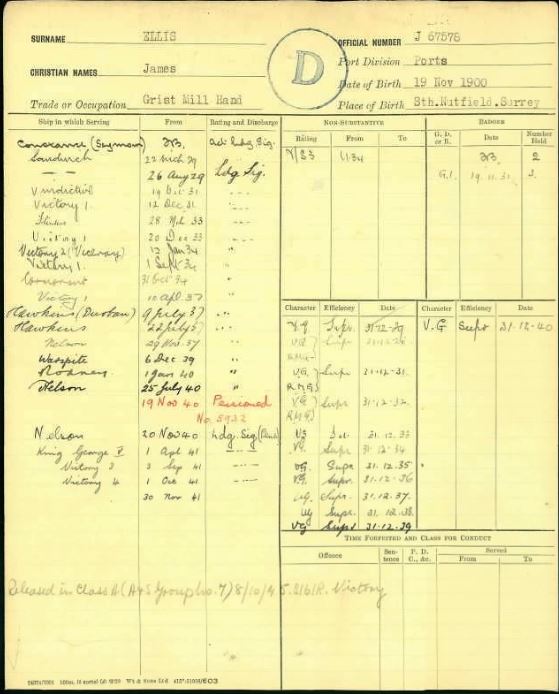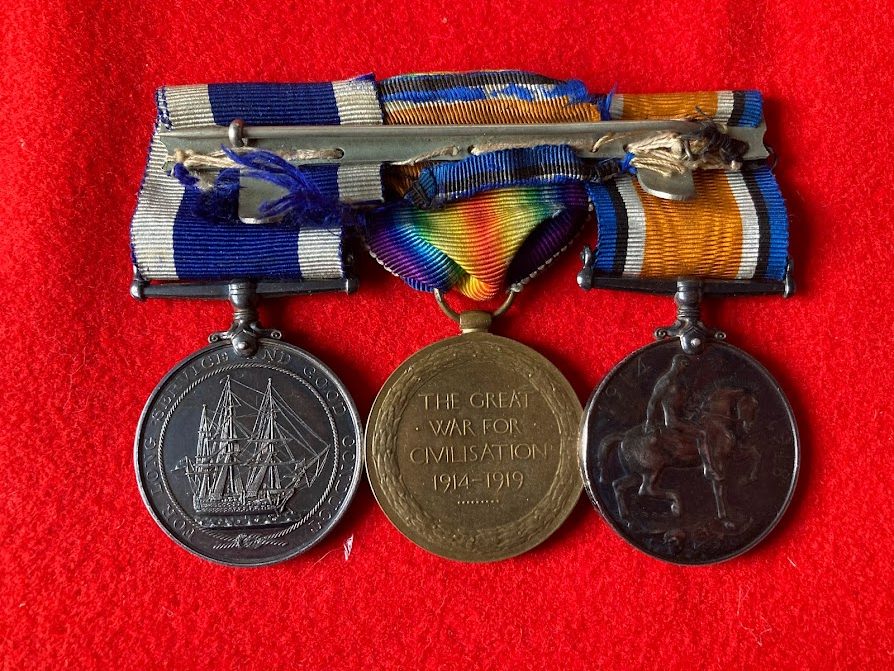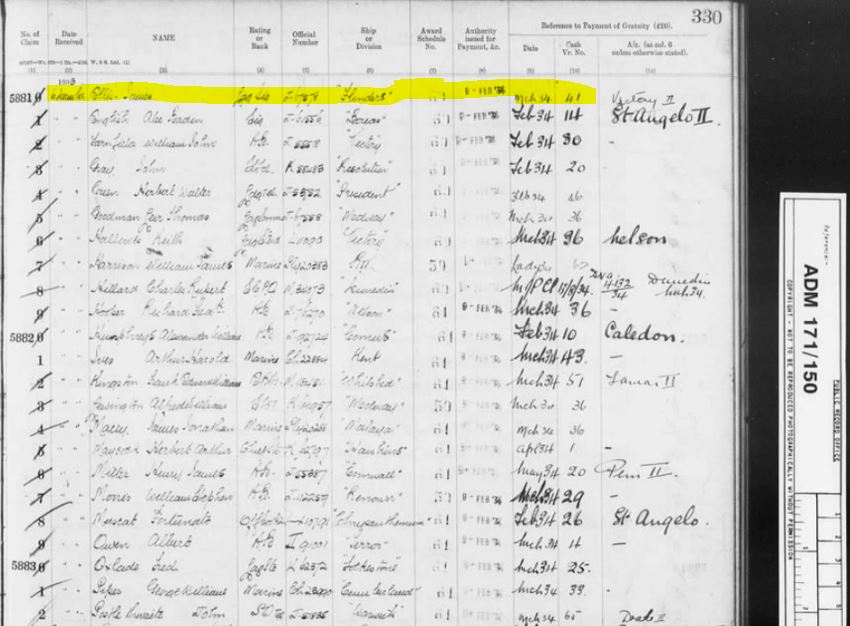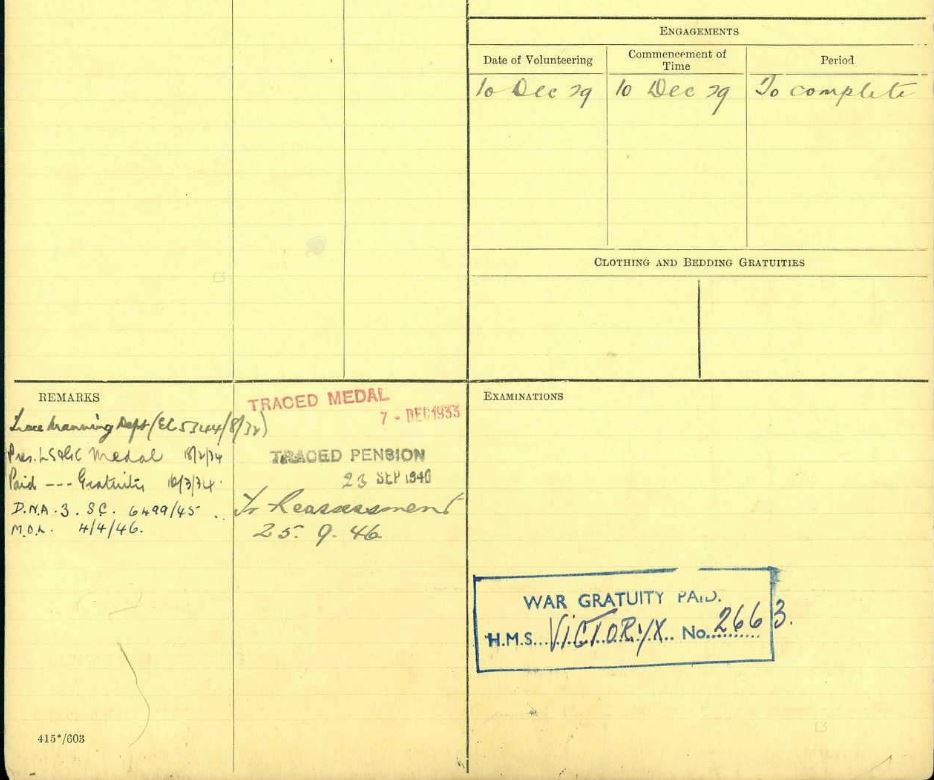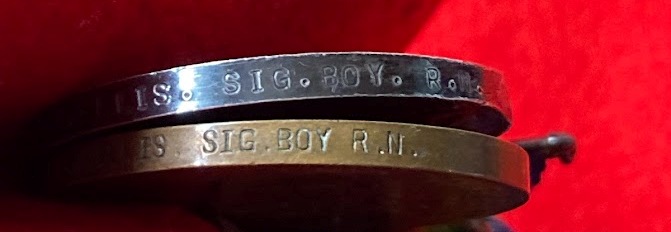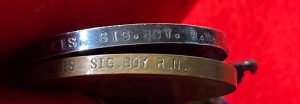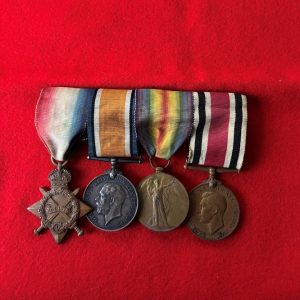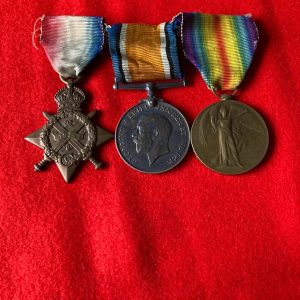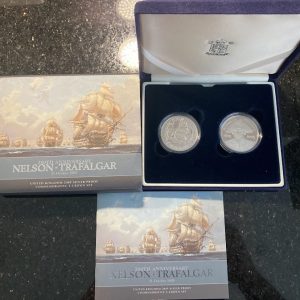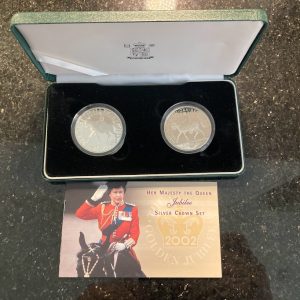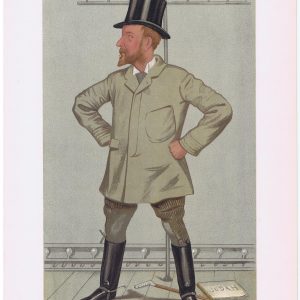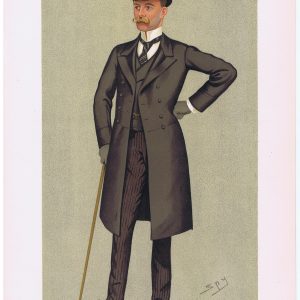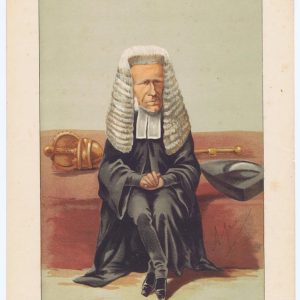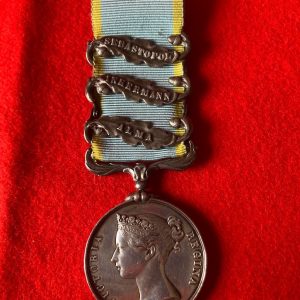Description
Royal Navy Long Service Medal group to Leading Signaller Survey Ship H.M.S. Flinders.
James Ellis was born 19th November 1900 at South Nutfield, near Redhill, Surrey. He was a Grist Mill Hand at the time of his joining the Royal Navy as a Boy Signaller on 7th February 1917.
Service Papers show that Leading Signaller Ellis was serving on H.M.S. King George V from 1st April 1941. His subsequent posting was at Victory 3 from 3rd September 1941 indicating 6 months on the crew of H.M.S. King George V. During this period she saw the tracking and sinking of the German Kriegsmarine Battleship Bismarck.
He was presented with his Long Service Medal 18th February 1934.
Medals – British War Medal and Victory Medal ( J. 67578 J. ELLIS. SIG. BOY. R.N. ), Long Service and Good Conduct Medal ( J. 67578 J. ELLIS.L. SIG. H.M.S. FLINDERS ) these swing mounted as worn, with loose 39/45 Star, Atlantic Star, War Medal (6).
HMS Flinders was a Royal Navy survey ship, completed in 1919 by Lobnitz & Co, Renfrew. She was laid down as the Aberdare-class minesweeper Radley but repurposed during construction.
Supplementary Information
Nutfield Mill (approx. 8.2 miles NE of Lowfield Heath). This mill stood on the parish boundary between Nutfield and Bletchingley. It was variously known as Bottery’s Mill or Woolpits Mill. It was probably built in the late 1600’s as a mill was recorded on this site in 1680. It ceased work in 1914 and was demolished in December 1929. Thomas Beale was miller here in the 1830’s and Edward Scott operated it from 1874 to 1885 before he moved to Outwood smock mill. Nutfield Mill was powered by one pair of common and one pair of patent sweeps and had two pairs of stones.

